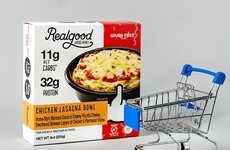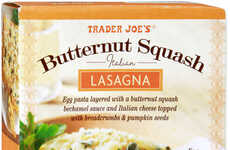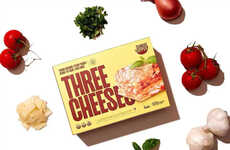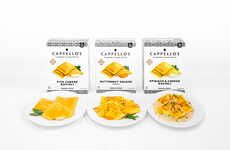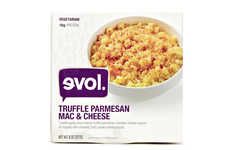
This Gluten-Free Homemade Lasagna Recipe Swaps Noodles for Potatoes
Laura McQuarrie — March 2, 2017 — Lifestyle
References: asweetpeachef
This homemade lasagna recipe from the 'A Sweet Pea Chef' blog puts a fresh spin on the traditional Italian dish by excluding the one main ingredient that is central to most lasagna dishes—the noodles.
In place of long lasagna noodles, the Sweet Potato Lasagna recipe calls for a mandolin or sharp knife to slice sweet potatoes into thin rounds. In the same way that strips of noodles are placed atop one another, these sweet potato disks are arranged in a way so that they overlap to form the layers of the dish.
While this pasta-free recipe swaps one type of starch for another, it remains true to the use of ingredients like olive oil, ground meat, cheese, tomato sauce and classic Italian spices. The result is a recipe that's not only gluten-free, but healthy and lean.
In place of long lasagna noodles, the Sweet Potato Lasagna recipe calls for a mandolin or sharp knife to slice sweet potatoes into thin rounds. In the same way that strips of noodles are placed atop one another, these sweet potato disks are arranged in a way so that they overlap to form the layers of the dish.
While this pasta-free recipe swaps one type of starch for another, it remains true to the use of ingredients like olive oil, ground meat, cheese, tomato sauce and classic Italian spices. The result is a recipe that's not only gluten-free, but healthy and lean.
Trend Themes
1. Gluten-free Substitutions - Exploring alternative ingredients to traditional gluten-based products presents an opportunity for disruptive innovation in the food industry.
2. Vegetable-based Meals - Developing inventive recipes that replace traditional ingredients with vegetables opens up possibilities for disruptive innovation in the culinary world.
3. Alternative Layering Techniques - Experimenting with new layering methods for dishes, such as using sweet potato disks instead of noodles, offers a disruptive innovation opportunity in the culinary arts.
Industry Implications
1. Food Manufacturing - Companies in the food manufacturing industry can seize opportunities by creating and marketing gluten-free alternatives to traditional products.
2. Health Food Stores - Health food stores have the potential to disrupt the market by offering a variety of vegetable-based meal options that cater to individuals with dietary restrictions.
3. Culinary Education - Culinary schools and institutions can incorporate alternative layering techniques, like using sweet potato disks, into their curriculum and help drive disruptive innovations in cooking.
1.6
Score
Popularity
Activity
Freshness



